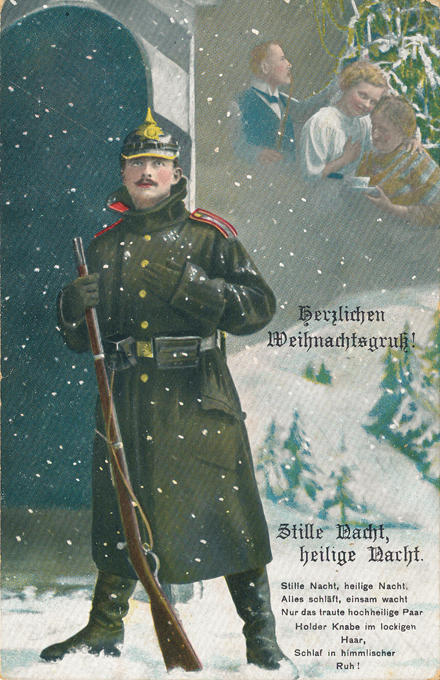A critical look at a world hit
Freiburg, Dec 17, 2018
The Christmas song “Silent Night, Holy Night” is allegedly sung in 300 languages. A lot of myths surround this song that has been subjected to severe criticism since it was written. Dr. Dr. Michael Fischer from the Center for Popular Culture and Music (ZPKM) at the University of Freiburg explains why the world hit has not been met with enthusiasm in church or in academia – and why it is nonetheless important to preserve it as a cultural asset.

Corny cultural asset: The song “Silent Night, Holy Night” was written 200 years ago. Photo: J.Mühlbauer exclus./Fotolia
Once upon a time there was a mouse. According to legend, it is thanks to this little animal that the “Silent Night” is sung at Christmas in many countries of the world. On December 24, 1818, a mouse is said to have eaten the bellows of the organ in Oberndorf near Salzburg and made the instrument unplayable, Michael Fischer says. The priest Joseph Mohr therefore handed over a poem to the organist Franz Gruber and asked him to write a suitable melody for two solo voices and for guitar accompaniment. On the same evening, Gruber presented a composition that was apparently very well received. “The mouse legend has no historical basis,” says Fischer, director of the ZPKM. “However, it illustrates an aspect of Christmas, namely that miracles are connected with the birth of Christ.”
Translated into hundreds of languages
Gradually, the simple composition from Salzburg became popular. After Tyrolean musicians had performed “Silent Night” in cities such as Leipzig, prints of the song were sold in Dresden in 1834 as one of four so-called “Tyrolean outlaw songs”. Nine years later it was found in the “Musicalischer Hausschatz der Deutschen” (German musical treasure trove). The song quickly conquered the world: first Saxony and Prussia, then Hamburg, later Scandinavia and finally overseas territories. “The decisive factors were the reception in the urban context and the expanding publishing market,” Fischer reports. “On the other hand, 19th-century Alpine folklorism played a role.” Only afterwards did the song become a prototypical example of an orally transmitted “folk song”. The fact that today it is sung in supposedly 300 languages is part of this myth.
Cozy and bourgeois
The song’s abbreviation from its original six to three verses occasioned a largely secular reception. Parallel to the familiarization and domestication of Christmas, the small bourgeois family, who were gathered under the decorated Christmas tree, also used the song for self-assurance. In the 19th and early 20th centuries, however, the theologians criticized other aspects: "Especially for hymnologists the song was for a long time too little liturgical, too unecclesiastical, too emotional, sentimental and corny.

Greetings from the front: This song postcard shows a WWI soldier. Source: ZPKM/University of Freiburg
In 1897, the Mainz cathedral conductor Georg Weber formulated his harsh verdict: in the first verse, there was no Christian thought, the author of the text had not understood the secret of Christmas and the melody was flat and tasteless. Protestant critics expressed themselves similarly: the theologian Wilhelm Nelle wrote in 1924 that the text was simple and warm and that the melody matched it, but "a higher value is not inherent in either". The educated rejected the emotionality of the text and the melody. "However, they criticized less the lack of existential seriousness or the obvious lack of consequences of singing," emphasizes Fischer. What is problematic is not the mood associated with the song, but that it does not lead to humane action - today, for example, with regard to global poverty, rising injustice, the problems of migration or the environment.
The Incarnation of Man
In the original six verse version, however, there is a passage that evokes the political dimension of Christmas. It is said that Jesus, as a brother, encompassed “the peoples of the world”. For Fischer the prophetic-messianic dimension of Christmas appears here, which has been pushed back in the factual reception of the song. Despite all justified criticism, however, he is of the opinion that even today the song can still remind people of how the world should be: “Many people, even those who have distanced themselves from the Church and Christianity, long for silence and peace and hope for love and salvation - however they imagine this ‘redemption’ in detail. Ultimately, Christmas is not only about the Incarnation of Christ, but also about the Incarnation of Man: “In this respect it is good to preserve this 200-year-old song as a cultural asset and at the same time to understand it as a world-changing utopia.”
Annette Kollefrath-Persch

